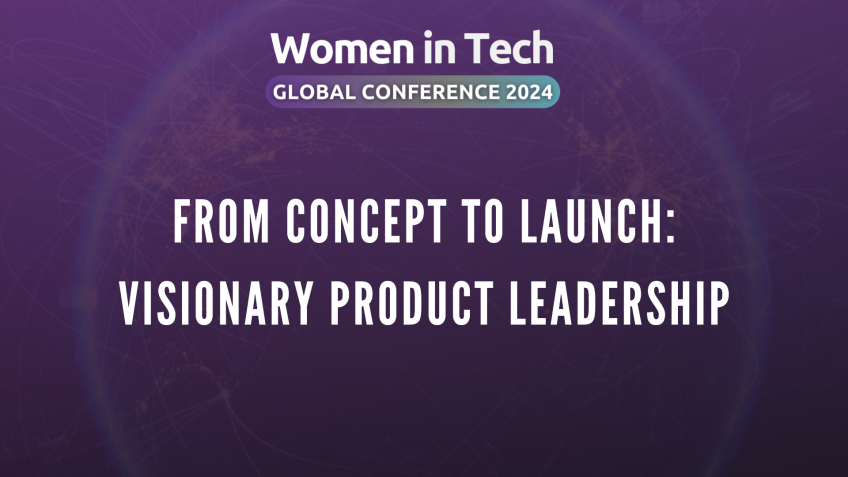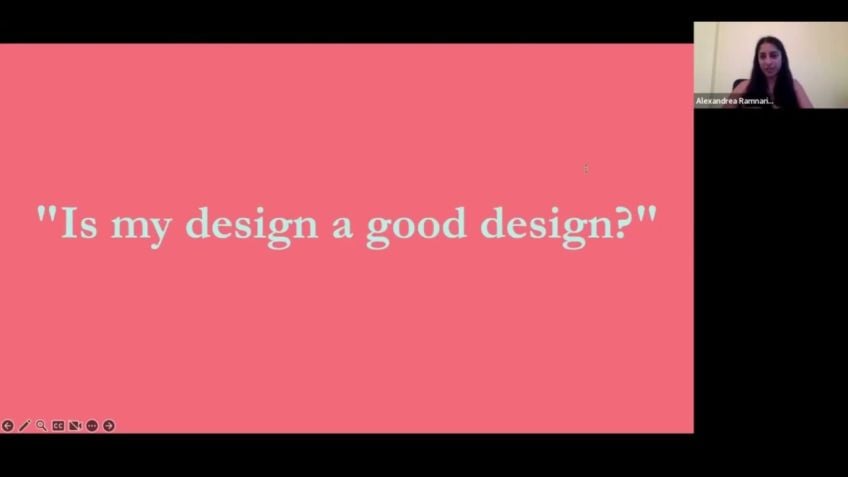Product Power : Harnessing the potential of Product-Led Thinking
Prashanti Pathak
Technical Product OwnerDiscover the Power of Product Led Thinking
In recent years, radical shifts have been occurring in the way businesses approach product development. Traditional methods often felt suffocating and difficult, treating customers as recipients rather than vital participants in the process. Thankfully, product led thinking is here to shift the paradigm. But what exactly is this approach, and how does it revolutionize product development?
Product Led Thinking: The Method Revolutionizing Product Development
If you're annoyed at the constant overflow of cold calls, intrusive marketing tactics, and poorly timed ads, you're not alone. Wouldn't it be refreshing if businesses' priority shifted from stealing your attention to improving your experience with their product, considering your needs, preferences, and pain points? Well, product led thinking does just that, placing the user in control and introducing a more user-centric approach.
How Is Product Led Thinking Different?
The concept of prioritizing the product and user experience (UX) has been around for a while, but it's gained significant popularity due to the rise of subscription-based business models and increasing importance of UX in product development. Unlike traditional methods that depend on marketing and sales to drive adoption, product led thinking enhances user adoption and engagement through the product itself. Shifting focus from the company to the customer, the strategy is to make the customer experience seamless and enjoyable.
The Power of Word-of-Mouth Reference
Product led thinking’s primary marketing tool is satisfied customers. Under this model, a well-designed product becomes a marketing asset, with satisfied users referring and promoting the product, driving engagement, and boosting growth. Companies no longer need to rely on traditional, often aggressive, sales and marketing tactics. Customers, satisfied with their experience, become the product’s advocates, creating a powerful marketing force.
Companies That Embrace Product Led Thinking
Many successful companies have adopted this model including Slack and Dropbox. Both companies disrupted traditional business models and have revitalized the product development process. Slack, which was originally an internal tool for a game development company, achieved global popularity thanks to the seamless, enjoyable UX it offered, driving an unforgettable word-of-mouth growth. Dropbox also became popular by addressing users' pain points creating a product that was not only easy to use but also provided valuable amenities to users.
Five Key Components to Adopting Product Led Thinking
- Understand Your Customer: Develop a deep understanding of your customers' needs and pain points. Use this understanding to inform your product development process and to ensure that your product meets your customers' needs.
- Make Data-Driven Decisions: Collect data on user behavior, product usage, and other key metrics. Make data-driven decisions about where to best invest your resources.
- Iterate Rapidly: Product led thinking is about constant iteration and continuous improvement. Testing products with users at each stage of development helps you to identify potential issues and resolve them promptly.
- Focus on User Adoption: Products must be easy to adopt and deliver immediate value to the users. This will help to increase user engagement and drive long-term customer loyalty.
- Foster a Culture of Experimentation: Encourage your team to test new ideas and be prepared to pivot quickly when something isn't working. This will keep your company agile and responsive to customers’ changing needs.
Conclusion
In conclusion, product led thinking is a refined approach to product development and marketing that prioritizes user experience, allowing customers to discover and adopt a product on their own terms. It's like playing an informed and precise game of charades, where your customers are your teammates, and you are helping them to guess the right answers. So, don't just be another player in the field, be the game changer and introduce product led thinking in your organization's development approach today!
Video Transcription
Hello, everyone. Good morning and good afternoon. Let's wait for a few seconds and then I'll get started. Mhm. Ok. It's past one minute, I'll get started. Thank you for being here today with me today. I'll be talking about product led thinking and how it is a powerful tool.So I will start actually by asking a question. Have you ever received an unsolicited cold call or an email from a salesperson? Or have you ever been interrupted by an ad while browsing online? I bet most of us have these traditional sales and marketing tactics can be intrusive and annoying. But uh what if there is a better way, a way that puts the user in control and empowers them to discover and adopt to a product on their own terms? That's where product led thinking comes in today. We'll be talking about the product thinking how it is different from a traditional method of product development. It's fundamentals and some real world companies that have embraced this approach and also how we can um make that mind shift to use it at, at our workplace if not doing already. So let's get started. Uh We have been developing products since many years now. And this is an interesting thing to to think about that, whether this is a new concept or like never, nobody in the past have ever thought about it.
So the truth is that this is not a completely new concept, but it gained popularity in recent years due to the rise in subscription based business models and increasing import importance of user experience and product development. So the idea of putting product and the user at the center of development process has been around for a long time. But product led thinkings take this approach a step further by emphasizing on the importance of driving user adoption and engagement through the product itself. In the past, many companies have relied on more traditional approaches to product development such as relying on sales and marketing to drive the adoption or building products based on internal assumptions or by understanding industry trends. However, with the rise of subscription based business models and increasing importance of user experience, many companies are now adopting a more product led approach. As a result, product led thinking has gained traction as a key concept in modern product development and is now considered as a fundamental part of many successful de develop product development strategies. When you're talking about product, like thinking, let's talk about it's so like the basic thing that comes in mind while talking about it and it's the user experience um to understand how product led thinking works. Let's use this analogy.
Think of product led thinking as a building, as building a house, just like a house needs a strong foundation to support the structure. A successful product needs a solid user experience to support its growth and adoption in traditional development methods. The focus might be on um designing and building the house without much focus on designing and building the house for the end user keeping in mind. This means that considering things like layout functionality, aesthetics, to ensure that the house is not only functional, but it is also enjoyable to live in identifying the user needs, identifying the pain points of user product led thinking creates a seamless and enjoyable user experience that drives adoption and growth by itself.
This brings me to my next topic which is the power of word of mouth reference. So we have, we have been talking about product lead thinking for the last two minutes and then the only thing that uh that that gets highlighted in these conversations as user experience and how we can make it seamless and enjoyable for user uh when they are using the product.
And we, we, we didn't talk about marketing, we didn't talk about any other strategy so far. So how does this work? Your product is so good that you don't have to market it. It's the word of mouth and people's refer that um that increase the growth and sustainability of the product. So just like ho how a well designed and comfortable house will attract visitors and potential buyers. A well designed and enjoyable product will attract users and potential customers.
The word of mouth referral from satisfied user can be powerful marketing tool product like thinking leverages this power of word of mouth referrals by creating a product that user loves and wants to share by providing a great user experience. The product becomes something that user wants to recommend to their friends, to their colleagues. And this can lead to a sustained growth and success. So without the need of intrusive annoying sales and marketing tactics, when user becomes the advocate, they become the marketing department, this is the power of product led thinking. So so far, we have covered like how product led thinking is different in from the traditional approaches that we have and how it has its its own merits and benefits. If we just focus on development of a product from users point of view. Now let's see some real world examples of uh product led thinking. Let's take a look at some uh companies uh that have successfully embraced product led thinking. One of those companies are um is Slack and another one is dropbox. These two are great examples. Both of these companies have disrupted the traditional business models and change the way we think about product development and marketing.
Say for example, Slack started as an internal tool for game development company and before and then it evolved to a collaboration platform used by millions of people around the world now. So this is so interesting to know like started from an internal tool for a game development company.
And now it's a collaboration platform that almost every company is using in this world. The company embraced product lead thinking by providing a seamless and enjoyable user experience that drove adoption and growth through word of mouth reference. Similarly, Dropbox focused on creating a product that was easy to use and provided value to users. They addressed the pain points of the user and that's how it became popular. And instead of leveraging the power of um other marketing techniques and all those things, it was just word of mouth reference to drive both growth and success. Um For Dropbox. Now, let's talk about the five key components that we need to focus on. If we are aiming uh to adopt product led thinking, sometimes it is um a difficult, we have learned the concepts we know the fundamentals, but sometimes it's really difficult to adopt to that mindset, uh which uh which will uh enable us to follow product led thinking. Um So how should we do that? If you want shift, if you want to shift the mindset to product led thinking, it can be a challen challenging process, especially if you are used to the traditional approaches of product development and business strategy. So um I'm gonna talk about five points that I believe are key components of uh product led thinking.
And if we just focus on uh start focusing on these five points, uh It will be a good place to start with uh and implementing product rate thinking in your day to day life. So the first thing I would like to talk about is customer start with customer to shift your mindset to product. Like thinking, start by focusing on the customer, develop a deep understanding of your customer, their needs and and their pain points. Use this understanding to inform your product development process and ensure that your products are meeting the needs of your customers. The second thing that I would like to talk about is data. Data is a critical component of product led thinking. Make sure that you are collecting data on user behavior, product usage and other key matrices. Use this data to inform your product development decisions and make data driven decisions about where to invest best your resources. These kind of data driven informed decisions will go a long way.
Even if there are few things that you need to adjust along the way. These if you're using data to make those decisions, it will be a lot easier process. Uh The third thing is iterate rapidly, which is product led thinking is all about iteration and continuous improvement. Make sure that you are developing your products in small increments and testing them with user at each stage. This will help you identify and fix problems early in development process and ensure that your products are meeting the needs of your customers. The fourth one is focus on user adoption to shift your mindset to product led thinking you need to focus on user adoption, make sure that your products are easy to adopt and provide immediate value to the user. This will help to increase your user engagement and drive long term customer loyalty. And fifth point is foster a culture of experimentation. Product like thinking requires culture of experimentation and risk taking, encourage your team to test new ideas and approaches and be willing to pivot quickly.
If something isn't working, this will help you stay, stay agile and sponsors to the needs of your customer. So if we start with these five steps, eventually, um you will see that um your de develop product development approach is changing to a product led thinking approach. And as we know, it's a very good approach if you want to have a sustainable growth and adoption for the product. Now let me talk a little bit about um before we come to the conclusion, I'll um take a small example if I have to develop a product, um how will I approach it from um product led thinking point of view. So let's take a product, think of developing it using product thinking, let's say that's a com that a company wants to develop a new project management tool for remote teams. So instead of starting with a list of features and capabilities, the product team starts by conducting ex extensive user research to understand the need and the pain points of the customer. So this will be the step one. Then based on this research, the team identifies a few key features that are critical for remote teams such as real time, collaboration, task tracking or progress and reporting.
They also identify several user experience design principles such as making the to be easy to use intuitive that will guide the development process. Next, the team starts to develop the product in small increments. With each iteration tested with a group of remote team users, the team collects the feedback on each duration and uses this feedback to inform the next iteration ensuring that the product is meeting the needs of the target user. So throughout the development process, the team uses data to inform their decision, they collect data on user behavior feature users and uh the other key matrices and use this data to make data driven decisions about what features to develop next and where to invest their resources.
And finally, the team focuses on you user adoption, making sure that the tool is easy to adopt and provide immediate value to the user. They offer training and support to help user get started continuously, get the feedback to ensure that the tool is meeting the need of their target users. So by following this product led thinking approach. The team is able to develop a pro project management tool that truly meet the needs of remote teams resulting in higher user adoption and engagement and ultimately leading to big business success. So, in conclusion, I would like to say that um it is a refined approach to product development and marketing that prioritizes user experience and empowers user to discover and adopt a product on their own terms by focusing on user needs and pain points. The product lead thinking um creates a seamless and enjoyable user experience that drives adoption and growth through word of mouth reference. This can lead to sustained growth and success without the need of being um going for additional marketing efforts. And if you have to use an example, if you can think of it as a as a as trying to win a game of Sharat, you could just act out random things and hope your team guesses correctly.
But if you don't actually think about what clues uh you need to give them. Uh If you don't think about that, you might end up failing around like a clueless participant product. Like thinking is like thinking about what clues will lead your team to guess the right answer and then expertly conveying those clues with precision and thinness, except in this case, the game is developing your product and your customers are your teammates. So don't be a feeling a clueless participant use product thinking, I encourage um all of you to embrace product thinking in your own organizations and use it. That's about, um, the product you're thinking any questions? Ok, then I'm just quickly taking a look at the chat. Ok, thank you, everyone.






